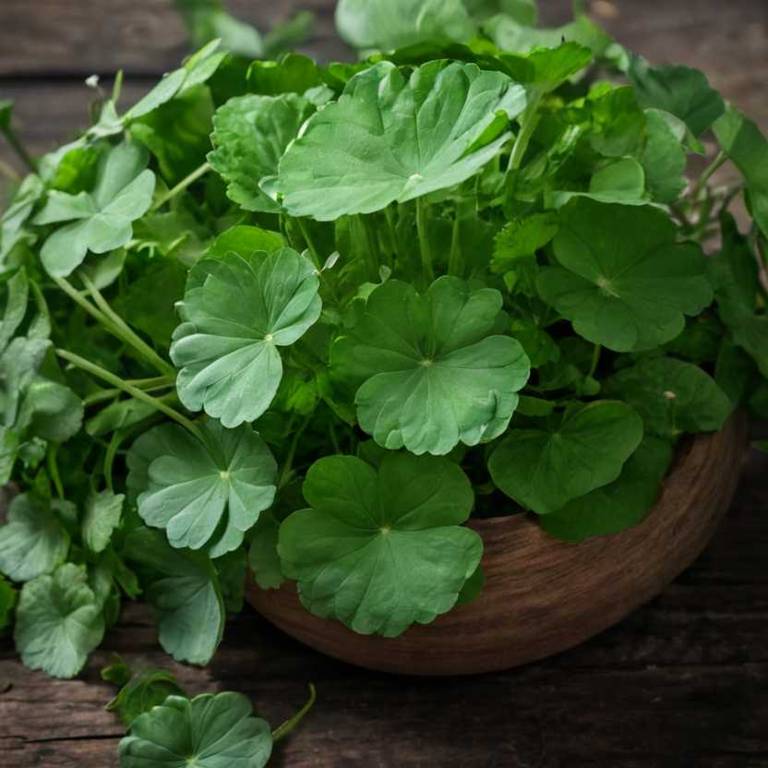By Leen Randell
Updated: Jul 20, 2024
10 Medicinal Constituents Of Centella Asiatica (Asiatic Pennywort)

Centella asiatica has active constituents such as triterpenoids, flavonoids, and phenolic acids.
These constituents have medicinal properties such as anti-inflammatory, antioxidant, and antifungal properties. They can improve cognitive function, memory, and concentration, making it beneficial for people with neurological disorders.
Additionally, the constituents can also promote wound healing, improve skin health, and reduce stress and anxiety, thus enhancing the overall quality of life.
This article explains in details the 10 best active constituents of Centella asiatica.
1. Asiaticoside
Centella asiatica asiaticoside is a bioactive compound extracted from the plant Centella asiatica.
It has been traditionally used in Ayurvedic and Chinese medicine for its healing properties. Asiaticoside has anti-inflammatory, antioxidant, and wound-healing activities, making it effective in treating various skin conditions such as acne, psoriasis, and dermatitis.
Its ability to stimulate collagen synthesis also makes it useful in wound repair and skin regeneration.
2. Madecassoside
Centella asiatica madecassoside is a triterpenoid saponin extracted from the leaves of the Centella asiatica plant.
It has been traditionally used in Ayurvedic and Chinese medicine for its wound-healing, anti-inflammatory, and antioxidant properties.
Madecassoside has been shown to stimulate collagen synthesis, improve skin elasticity, and reduce inflammation, making it a popular ingredient in skincare products and treatments for promoting healthy and youthful-looking skin.
3. Madecassic acid
Centella asiatica madecassic acid is a unique triterpenoid compound extracted from the plant's leaves and stems.
It has been extensively studied for its bioactive properties and potential health benefits. Madecassic acid has been shown to exhibit anti-inflammatory, antioxidant, and antimicrobial activities, making it a valuable component in traditional medicine and modern skincare products.
Its uses range from wound healing to skin regeneration and even cognitive function improvement.
4. Cynarin
Centella asiatica cynarin is a bioactive compound extracted from the plant.
It has been extensively researched for its numerous health benefits, including anti-inflammatory, antioxidant, and wound-healing properties. Cynarin has been shown to improve skin elasticity, reduce fine lines and wrinkles, and promote collagen synthesis.
Additionally, it has been found to possess antimicrobial and antiviral activities, making it a promising ingredient in skincare products and traditional medicine.
5. Sitosterol
Centella asiatica sitosterol is a type of plant sterol that has been isolated from the leaves and stems of this herb.
It has been shown to have various biological activities, including anti-inflammatory, antioxidant, and immunomodulatory effects.
Sitosterol has been found to inhibit the production of pro-inflammatory cytokines and enzymes, making it a potential natural remedy for treating inflammatory diseases such as arthritis and asthma.
6. Asiatic acid
Centella asiatica asiatic acid is a bioactive compound extracted from the leaves of the plant.
This triterpenoid saponin has been extensively studied for its numerous biological activities and potential therapeutic applications.
Asiatic acid has been shown to possess anti-inflammatory, antioxidant, and antimicrobial properties, making it a promising candidate for treating various diseases, including skin disorders, wounds, and cancer.
7. Centelloside
Centella asiatica centelloside is a bioactive compound isolated from the leaves of the Centella asiatica plant.
It has been traditionally used in Ayurvedic and traditional Chinese medicine to promote wound healing, skin health, and cognitive function.
Centelloside has been shown to possess anti-inflammatory, antioxidant, and immunomodulatory properties, making it a promising ingredient for the treatment of various diseases, including atopic dermatitis, psoriasis, and neurodegenerative disorders.
8. Madecasylic acid
Centella asiatica madecassolic acid is a potent bioactive compound extracted from the plant's leaves.
It has been extensively researched for its therapeutic properties, including anti-inflammatory, antioxidant, and wound-healing activities.
Madecassolic acid has been shown to inhibit pro-inflammatory enzymes, reduce oxidative stress, and promote tissue repair, making it a valuable ingredient in skincare products, pharmaceuticals, and traditional medicine practices.
9. Cynaropicrin
Centella asiatica cynaropicrin is a bioactive compound extracted from the leaves of the plant.
It has been traditionally used in Ayurvedic and traditional Chinese medicine to treat various health conditions, including skin wounds, ulcers, and inflammatory disorders.
Cynaropicrin has been shown to exhibit anti-inflammatory, antioxidant, and antibacterial properties, making it a potential therapeutic agent for the treatment of various diseases.
10. Oleic acid
Centella asiatica oleic acid is a naturally occurring fatty acid extracted from the leaves of this plant.
This potent antioxidant has been traditionally used in traditional medicine for its wound-healing and anti-inflammatory properties.
Rich in oleic acid, it has shown promise in promoting skin health by reducing inflammation, improving skin elasticity, and enhancing collagen production, making it a popular ingredient in skincare products.